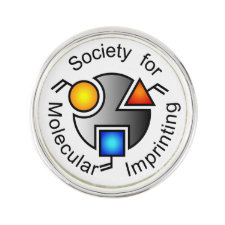
Authors: Chen J, Zhang WT, Shu Y, Ma XH, Cao XY
Article Title: Detection of Organophosphorus Pesticide Residues in Leaf Lettuce and Cucumber Through Molecularly Imprinted Solid-Phase Extraction Coupled to Gas Chromatography.
Publication date: 2017
Journal: Food Analytical Methods
Volume: 10
Issue: (10)
Page numbers: 3452-3461.
DOI: 10.1007/s12161-017-0875-5
Abstract: How to determine multipesticide residues in vegetables is important for the modern society. The development of a simple, rapid, and sensitive method to determine pesticide residues is significant. Our study used common vegetables-leaf lettuce and cucumber, and a new molecularly imprinted polymer (MIP) was synthesized using O,O'-dimethylthiophosphoryl chloride, an intermediate for the manufacture of organophosphorus pesticides, as the template, methacrylic acid as the functional monomer, and ethylene glycol dimethacrylate as the cross-linker. The adsorption capacities of the prepared MIP toward five organophosphorus pesticides (trichlorfon, dichlorvos, dimethoate, imidacloprid, and methamidophos) were evaluated, and its potential as a sorbent for solid-phase extraction was investigated. A novel method for the simultaneous determination of multiple organophosphorus pesticide residues in vegetables was developed by utilizing molecularly imprinted solid-phase extraction (MISPE) coupled with gas chromatography. Under optimal solid-phase extraction conditions, with a flow rate of 3.0 mL/min for loading 100 mL, the enrichment factor was in the range of 36-452 for the five organophosphorus pesticides. The peak area precision of the five organophosphorus pesticides based on five replicates was from 1.59 to 4.07%. The leaf lettuce spiked sample was used to verify the fortified recovery for this method, and the results ranged from 87.48 to 97.85%. The MISPE-gas chromatography method could be used to detect organophosphorus pesticide residues in lettuce leaf and cucumber from the farmer's market, and the detection limit had no obvious difference from the national standards. This method can meet the requirements of the analysis of pesticides in complex matrix
Template and target information: O,O'-dimethylthiophosphoryl chloride, trichlorfon, dichlorvos, dimethoate, imidacloprid, methamidophos
Author keywords: organophosphate pesticides, molecularly imprinted solid-phase extraction (MISPE), gas chromatography



Join the Society for Molecular Imprinting

New items RSS feed
Sign-up for e-mail updates:
Choose between receiving an occasional newsletter or more frequent e-mail alerts.
Click here to go to the sign-up page.
Is your name elemental or peptidic? Enter your name and find out by clicking either of the buttons below!
Other products you may like:
 MIPdatabase
MIPdatabase









